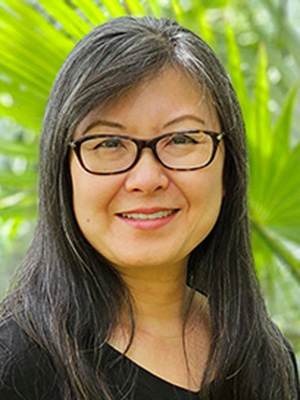No oxygen? No problem
When most people think of electric fish, they picture electric eels, which use more than 800 volts to stun their prey. However, some fish in the Amazon River use weaker electricity exclusively to communicate and navigate. A recent study shows how these electric fish adapted to survive in low-oxygen waters, and the authors say their findings could be a step toward new ways to target aggressive tumors, which thrive in a low-oxygen microenvironment.
Life exists everywhere on earth, including places that are low in oxygen, or hypoxic, such as coastal fresh waters. Hypoxic areas, also known as dead zones, are caused by nutrient runoff, which induces algae populations to explode and suck up most of the water oxygen. With 75% less oxygen than normal waters, these areas are toxic to air-breathing organisms.
Hypoxic environments can even exist in humans, such as the tissue surrounding a tumor.
A group of researchers in Canada studies two types of Amazonian Brachyhypopomus electric fish, hypoxia-tolerant and hypoxia-intolerant, to figure out how the tolerant organisms survive in otherwise lethal, hypoxic environments. They hypothesized that proteins in hypoxia-resistant fish have uniquely adapted to survive in dead zones. However, the team noted that Brachyhypopomus’ resilience in low-oxygen areas is independent of their electrical capacity.



Ahmed Elbassiouny, a former Ph.D. student of Chang and Nathan Lovejoy, and first author of the study, compared Brachyhypopomus to “living batteries” with high metabolic demands.
“Some of these fish live in streams where the oxygen level is so low that it's almost anoxic, or zero percent oxygen, for a few months (per year),” Elbassiouny said. “However, within the same genus, a sister group only exists in well-oxygenated waters. It is a perfect comparative system where we can take closely related species that have different environmental adaptations and ask what drives that adaptation.”
Lovejoy, a professor of biological sciences at the University of Toronto Scarborough, led multiple field expeditions to South America to collect hypoxia-tolerant and -intolerant Brachyhypopomus.
“In the field, we can fish for Brachyhypopomus by using instruments that detect the electric field produced by the fishes,” Lovejoy said. “It’s always exciting to detect the presence of an electric fish, and before catching the fish, we sometimes try to guess the species by the signal we detect. Of course, if we detect the signal of the electric eel, we need to be very cautious about our next steps.”
After performing whole transcriptome sequencing on the field samples, the team used these and other genomic data to look for patterns associated with hypoxia tolerance.
“You can think of the computation methods as looking for adaptive evolutionary patterns of diversity in naturally occurring sequences,” Chang said. “We basically use the sequences as a natural experiment. In practice, that means we can mine genomic databases, as well as combining that with our own sequencing, to look at the diversity of any given sequence. This is a very powerful approach, because of the increasing number of sequences that are available in databases.”
The team discovered that changes in the hypoxia-inducible factor 1 alpha gene may help Brachyhypopomus survive in dead zones.
In all vertebrates, HIF1α acts like an oxygen mask on a plane in response to low-oxygen conditions by providing the body with an alternative way to create energy. Elbassiouny called HIF1α a “bottleneck” transcription factor, whose activation ramps up cellular pathways, such as energy metabolism, angiogenesis and apoptosis, to increase tissue oxygen.

However, Chang said that finding statistically significant patterns didn’t prove adaptive evolution. That’s where Elbassiouny’s experiments came in. According to Chang, he designed novel assays to show that mutations in the HIF1α gene changed its protein function using CRISPR–Cas9 to express the Brachyhypopomus hypoxia-tolerant and -intolerant HIF1α genes in human cell lines.
“We overcame a lot of challenges because HIF1α is an inherently disordered protein, so it is hard to even predict how these changes in the protein could affect function,” Elbassiouny said. “We had to knock in and knock out the gene in one step because HIFα is a critical gene for survival.”
After further probing HIF1α’s function in the lab, the team found that HIF1α, in hypoxia-tolerant fish, contains two small ubiquitin-related modifier, or SUMO, interacting motifs that increase its activation in response to low oxygen. The team said these results show that HIF1α is a hotspot for adaptive evolution. They published their results in the Journal of Biological Chemistry.
The team said that Brachyhypopomus likely adapted to hypoxic environments to maintain its ability to communicate and navigate through electric signals, which require a lot of energy.
Elbassiouny, now a postdoctoral research fellow at the British Columbia Cancer Research Institute, plans to use his expertise in hypoxia to understand how tumors survive and thrive in hypoxic microenvironments. Like the algae in dead zones, tumors hoard oxygen, making their local environment toxic to other human cells. Tumors have such high metabolic demands that they can outgrow their oxygen supply, necessitating ways to survive without oxygen.
“The way cancer cells respond to hypoxia in the tumor microenvironment is one of the determining factors of how resistant to cancer therapy it is,” he said. “I believe our approach in this article of ‘learning from our natural world about novel molecular designs’ can offer a fresh perspective on how HIF1α is regulated in cancers and how it could be targeted for therapies.”
Enjoy reading ASBMB Today?
Become a member to receive the print edition four times a year and the digital edition monthly.
Learn moreGet the latest from ASBMB Today
Enter your email address, and we’ll send you a weekly email with recent articles, interviews and more.
Latest in Science
Science highlights or most popular articles

Bacteriophage protein could make queso fresco safer
Researchers characterized the structure and function of PlyP100, a bacteriophage protein that shows promise as a food-safe antimicrobial for preventing Listeria monocytogenes growth in fresh cheeses.

Building the blueprint to block HIV
Wesley Sundquist will present his work on the HIV capsid and revolutionary drug, Lenacapavir, at the ASBMB Annual Meeting, March 7–10, in Maryland.

Gut microbes hijack cancer pathway in high-fat diets
Researchers at the Feinstein Institutes for Medical Research found that a high-fat diet increases ammonia-producing bacteria in the gut microbiome of mice, which in turn disrupts TGF-β signaling and promotes colorectal cancer.

Mapping fentanyl’s cellular footprint
Using a new imaging method, researchers at State University of New York at Buffalo traced fentanyl’s effects inside brain immune cells, revealing how the drug alters lipid droplets, pointing to new paths for addiction diagnostics.

Designing life’s building blocks with AI
Tanja Kortemme, a professor at the University of California, San Francisco, will discuss her research using computational biology to engineer proteins at the 2026 ASBMB Annual Meeting.

Cholesterol as a novel biomarker for Fragile X syndrome
Researchers in Quebec identified lower levels of a brain cholesterol metabolite, 24-hydroxycholesterol, in patients with fragile X syndrome, a finding that could provide a simple blood-based biomarker for understanding and managing the condition.

